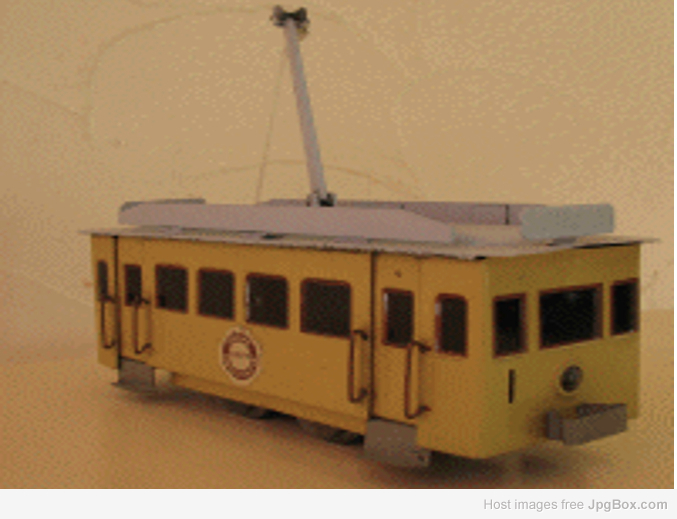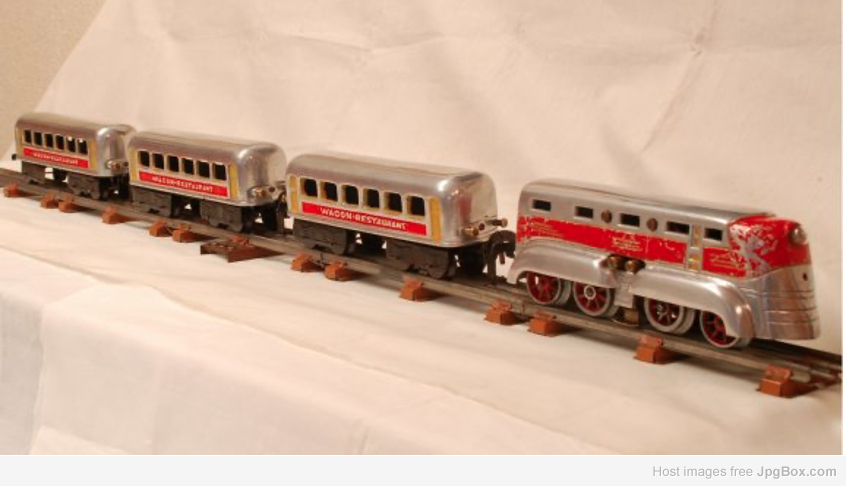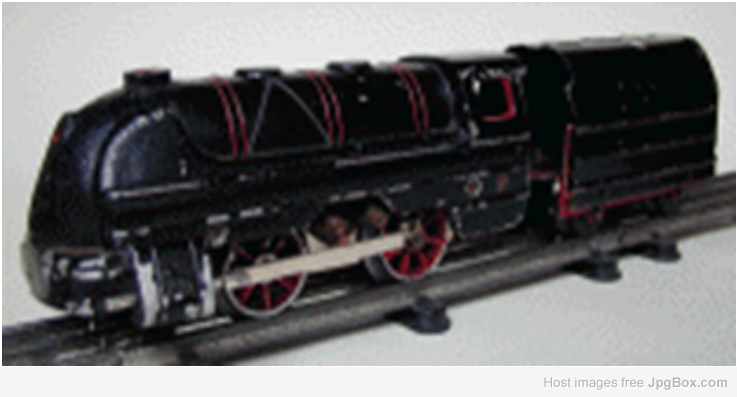The videos of commercial SxS's being made in Liege in 1943, the height of WWII, where one would suppose that the Nazis would mobilize every facility for the war effort, are amazing!!!
But did you ever think of model trains being produced in Belgium at that very time? Take a look at this article by an old friend John Cardwell, one of the most brilliant men I've met over the years: (I'd have to post the photos individually - if there are model train fanatics here, I will).
Flea Market Gold
In the late 1990’s while I was living in Frankfurt, Germany, I visited a flea market in eastern Belgium, not far from Liege. It was my first sampling of a Belgian flea market, and I was in the hunt for European 0 gauge trains. The flea market was in a suburban village, was outside, and after about an hour of searching, I had found not one single toy train item. Disappointed, I was preparing to leave, when I spotted a covered pavilion in the far corner of the flea market, furthest away from where I had parked my car. The pavilion contained mostly used furniture, but since I had come this far, I walked the isles thinking I had nothing to lose. Suddenly, I struck gold, but not the kind I had anticipated: before me was a 3X6 foot table covered with American Flyer “S” gauge trains, most of which were “3-digit” items from the early to mid-1950’s!
I struck up a conversation with the vendor, a Belgian, who explained he had been an AF collector for many years and was selling his collection. (Note: Gilbert had a European distributor for his products in the 1950’s, catering mostly to GI’s stationed there.) As I had also been an AF collector at the time, the vendor and I hit it off pretty well. I commented I was interested in getting a sample of different European nation’s indigenously produced 0 gauge, and he reached under his table and brought out a train set made by GILS. He explained it had been made by a small business owned by a Belgian family living in a suburb of Liege, who had produced 0 gauge sets in small numbers using a small manufacturing facility they had built on their property. He said they produced trains for about 20 years after the war. He sold me the set and two separate cars, thus making me the proud owner of what I believed to be an example of the only indigenously produced Belgian 0 gauge toy trains. I recently learned a great deal more about GILS and here is the rest of the story.
GILS trains were produced by Gerard Gilles and his family beginning in 1941. By background, Gilles was an electrician by trade who, by some accounts, had fought against the Germans prior to the German occupation of Belgium in 1940. As a result of this experience, he apparently became a kind of pacifist and wanted nothing to do with producing war-related material, but at the same time strongly resented the German Occupation. Beginning in 1940, be began producing small kitchen appliances, such as churning machines, but reportedly soon got the idea of making trains from a chance discovery of a toy electric train, possibly JEP, in a scrap yard.
A GILS train first appeared at Christmas time in 1941, and consisted of a toy electric trolley loosely modeled after the trolleys used in Liege, Belgium. It was sold as a set consisting of a trolley, track in gauge 1, and a transformer. All parts were made by Gerard Gilles in his home factory. Neither the set box nor its contents bore the name of GILS. Gilles marketed his sets to the department stores located in the center of Liege. In that first year of production, an initial batch of 200 of the 400 sets that had been ordered were delivered before Christmas and the remaining 200 sets, although delivered after Christmas, sold quickly. Apparently there was a significant demand for GILS trains even in wartime.

Photo 1: First GILS offering, a trolley car
Needing more room for their “factory”, in 1942 the Gilles family moved to a much larger house in Jupille, now a suburb of Liege, and set up a production facility in an adjacent building on their property. For Christmas 1942, they terminated trolley production and instead offered a streamlined diesel style powered passenger train also in gauge 1, the locomotive of which was inspired by the design of the Santa Fe diesels produced by GM. The locomotive and passenger car bodies were made of aluminum using the sand-casting method and then hand finished. Aluminum was a priority raw material, and could only be obtained locally using falsified requisition documents. One can only speculate how this was accomplished under the watchful eye of the German military occupation government. It is important to note however, that Gerard Gilles was NOT a collaborator with the Germans. He considered his re-directing highly sought-after aluminum intended for war production to toy train production a symbolic act of resistance.

Photo 2: Gils locomotive of 1942, inspired by the Santa Fe streamlined diesels.
Though expensive, German occupation officers enthusiastically bought these trains and sent them to Germany, apparently not recognizing they represented American trains. Also of note, it has been reported that during 1942 at least three German soldiers voluntarily worked part time in the factory helping make these trains.
The 1943 GILS offerings no longer included gauge 1 and instead offered 0 gauge trains that ran on a three rail track system designed by Gerard Gilles. The use of 0 gauge would continue throughout the life of GILS trains. The new 0 gauge locomotives were also re-styled and although they are referred to as Santa Fe styled “Silver GILS,” they bore scant resemblance to a Santa Fe loco. Gils continued to offer these sand-cast aluminum trains through the end of the war.

Photo 3: “Silver GILS” in 0 gauge
In 1945, GILS introduced their first steam outline locomotive, also made from cast aluminum, as were the tender and streamlined passenger cars. The freight cars however, used a metal chassis with the sides made from wood and painted. Later they used sheet metal sides and roofs and the sides were decorated using lithography. The locomotives were offered in black, green, and gray and carried hints of the pre-war Belgian National Railways type 12 high speed Atlantic locomotive. Of note, after the war, GILS used discarded sheet metal shipping containers which were flattened and used to make rails for the track.

Photo 4: GILS streamlined loco of 1945
The locomotive that displayed the GILS name as “GILS Express” appeared for the first time in 1948. These sheet metal locos and tenders were offered in either red or black and a few years later were also offered in blue. Some of these included a resistance coil in the smokestack into which GILS smoke pellets (made from pine tree rosin) could then be inserted to produce smoke. A few tenders were even fitted with a whistle. The GILS offerings were further expanded to include new coaches and freight cars made of sheet metal, and some accessories.
Photo 5: “GILS Express” loco of 1948
Photo 6: New sheet metal passenger cars, cast aluminum car in background.
Photo 7: Gils freight cars
In 1953 GILS began producing steam and electric outline locomotives in “ZAMAC,” an alloy of Zinc, Aluminum, MAgnesium, and Copper. !956 saw the introduction of a Belgian National Railway inspired type 59 diesel locomotive cast in ZAMAC. The last GILS model, reflecting the Belgian National Railway type 50 electric loco, debuted in 1958. It was made of sheet metal as were the bogie passenger cars.
Photo 8: GILS Express from 1953. Loco in ZAMAC, tender in sheet metal.
Photo 9: GILS ZAMAC model of Belgian type 59 diesel from 1954
Photo 10: Final GILS offering, sheet metal interurban loco and bogie passenger car of 1958.
In 1965 Gerard Gilles passed away and that spelled the end of GILS train production; however, the company continued to make soldering irons, theatrical spotlights, kitchen fans, and ventilation systems. In 2003, Cyrille Gilles, Gerard’s son who helped man the tables at the department stores during Christmases in the early 1950’s and ‘60’s passed away, thus closing the final chapter of GILS trains.
GILS was literally a mom and pop company that produced toy trains in relatively small numbers. Estimates are that no more than 1000 sets were ever produced in a single year. The sets were sold almost exclusively through separate arrangements with the larger Belgian department stores in Liege and Brussels, and then only at Christmas time. The stores would place their orders and GILS would work throughout the year to deliver the train sets in early December. It was reported the sets were very popular and would often sell out well before the Christmas holidays. The sets were clearly toys and were very popular with children, which may help explain why they are difficult to find today.
My Flea Market set
The GILS set I purchased in the Belgium flea market contains a number 53-55 locomotive, where the number 53 indicates the first year offered, 1953. The set came with this steam outline locomotive, tender, two freight cars, and track consisting of two straight and 12 curved sections that form a 41 X 34 inch oval. The locomotive is powered by a 24 volt AC motor and runs on three rail tracks with Bakelite sleepers, where each rail is electrically isolated. The loco runs in one direction when an outer rail and the center rail are energized. Energize the center rail and separately the other outer rail and the train reverses direction. Incidentally, this is the same system used by Zeuke trains made in East Berlin in the 1950’s. The locomotive is made of cast ZAMAC as are the driving wheels and the bogie frames. All of the wheels on the tender and the cars are made of Bakelite. The tender and the two freight cars in this set are made of sheet metal and the freight cars sport brightly colored lithography. No transformer was supplied with this set, however a transformer was available and was included with some sets. I run my GILS train on GarGraves track using a Lionel type Z, 250 watt transformer. The GILS motor was designed to run using the Belgian 50 Hertz AC current, but it operates quite well and does not overheat when using US 60 Hertz current.
A notable feature of the GILS trains is the couplers used, which are compatible with nothing else. Vastly oversized and non-symmetrical, they consist of a large hook at one end of a car and a bar at the other and function similar to the “big hook” system used by JEP, 1933 – 1952. The GILS couplers are easy to use, are perfectly suited for children and work quite well. Recall these trains are really toys and in no way pretend to be anything else. Like many toys, the locos and cars hint at the real thing that children of the era could see running the rails. The children relied on their imagination to fill in the gaps, something some of us still do!
The following photos capture some of the details of my flea market find. Enjoy!
Photo 11: GILS flea market set with original box
Photo 12: Close up of flea market GILS 53-55 loco and tender
Photo 13: GILS couplers. Note GILS track with Bakelite sleepers and the ZAMAC bogie frames.
Photo 14: GILS flea market set track layout.
Photo 15: GILS low side gondola from flea market set
Photo 16: GILS high sided gondola from flea market set.
Photo 17: Post 1959 GILS tank car.
Photo 18: Post 1959 GILS box car.